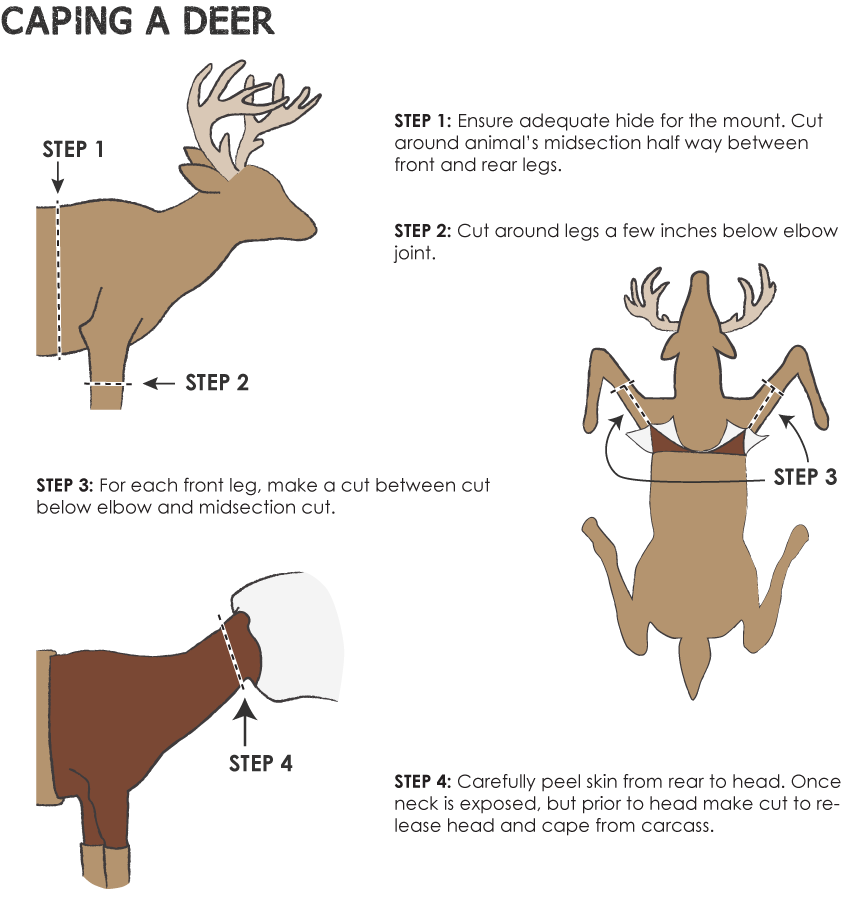Taxidermy Service
Dominion Outdoors is very excited to now offer high quality taxidermy service to our customers starting immediately! We are happy to be working with Yvonne VanDerWeijst to add this great service to our store. If you're interested in getting any taxidermy work done, please read below for more information.
Dominion Outdoors will be specializing in taxidermy service mainly for Whitetail Deer and Black Bear to start. If you have a Moose, Elk, or any other species you would like to have us work on, please contact us for pricing and availability.
You can check out the links below to see our current Taxidermy services:
If you plan on getting an animal mounted, please look at the following suggestions before shooting your animal and bringing it to us to be mounted.
Whitetail Deer:
- If you plan to mount your deer, do not shoot it in the head or neck. It is best to aim for the vitals behind the shoulder.
- Do not cut the deer's throat, as this will destroy the cape (hide).
- When you are gutting your deer, please follow the diagram below. Make one cut up the underside of the deer from the center between the hind legs, to a point a few inches behind the front legs. It is very important not to make this cut any further, as it will ruin the cape. Do your best to avoid soaking the hide in blood.
- Avoid dragging the deer, this can damage the hide. If you put your deer in the back of a pickup truck, be sure to place a tarp over the deer to protect from the elements.
- It is okay to let the deer hang to age a few days, if the temperature is 5°C or lower. Do not let the animal hang or sit in direct sunlight.
- To remove the deer's cape, cut around the center of the deer in the middle of the front and rear legs (step 1). Then cut around the front legs above the elbow joint, and cut the rest of the front legs off (step 2). Next try to sock out the front legs, or make a cut from around the front legs, to the center middle cut (step 3). When making this cut be sure to cut on the backside of the front legs, do not cut through the arm pit. Lastly make a cut from the middle center cut up the back of the neck to the bottom of the head. Be sure to make this cut as straight as possible. Do not ever cut the hide on the bottom/front of the deer's neck. Carefully pull the hide from the rear to the head (step 4).
- Do not ever try to remove the hide from the face of the deer, this detailed work is best left to the taxidermist. It is best to cut the head off at the neck after you have skinned it down close to the base of the skull (step 4).
- Be sure to allow the hide to completely cool before preparing for storage, never freeze a warm hide as this can cause the hair to pull. Fold the hide flesh-to-flesh, wrap in plastic bag, and place in freezer for storage. Make sure the appropriate tags accompany your head/hide. Do not allow the head/hide to sit around for very long once cool, blood, soil, and moisture create the perfect place for bacteria to grow. This bacteria can cause the hair to slip and your cape will be ruined.
- For additional help and questions, call Dominion Outdoors at 204-325-4110.

